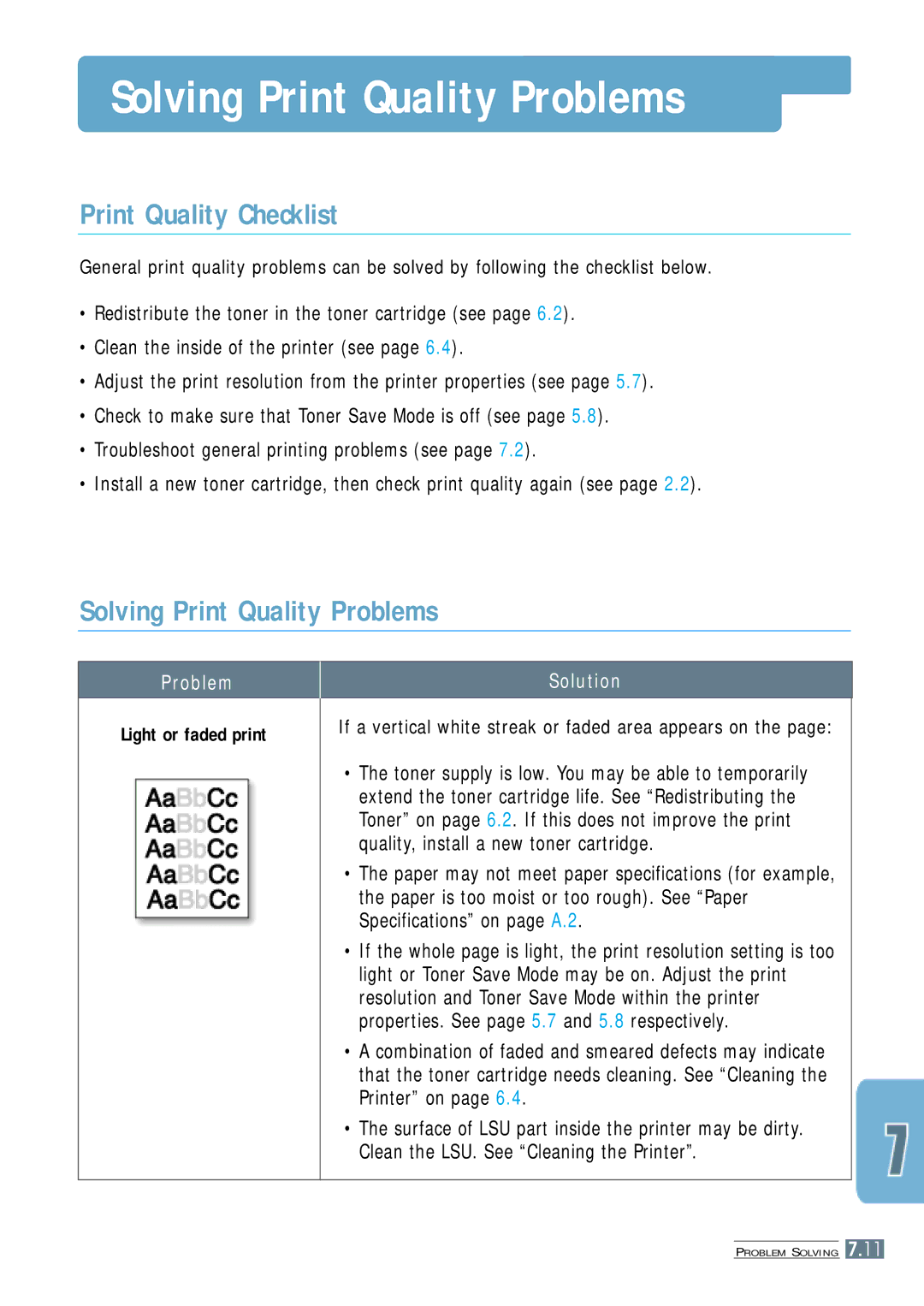Page
Page
Contents
Index
Environmental and Safety Consideration
Laser Safety Statement
Radio Frequency Emissions
Ozone Safety
Power Saver
Environmental and Safety Consideration
Canadian Radio Interference Regulations
Special Features Printer Components
Special Features
Handle paper flexibly
Printer Components
Front View
Parallel port
Printer Components
Toner cartridge Front cover
Page
Attach the supplied paper output support as shown
Unpack Your Printer
Carefully remove all packing tapes from the printer
Install the Toner Cartridge
Install the Toner Cartridge
Load Paper
Load Paper
Plug the other end into a properly grounded AC outlet
Turn on the power
Turn on the Printer
Print a Demo
Install the Printer Software
Before Installing the Printer Software
Verify the following
Installing the Printer Software from the CD-ROM
Install the Printer Software
Install the Printer Software
Software Installation Tips
From the Start menu, select Programs
When your computer confirms your selection, click Yes
Click OK
Control Panel Buttons Control Panel Lights
Control Panel Buttons
Clean the inside of the printer
Printer must be in the Ready mode
Print demo
Reprint last page of the job
Turn the Toner Save Mode on/off
Control Panel Buttons
For further information on the Toner Save mode, see
Processing
Ready mode
Control Panel Lights
Paper out
Page
When you choose print media, consider the followings
Choosing Paper and Other Media
Media Sizes and Capacities
Choosing Paper and Other Media
Paper Guidelines
Printing to the Face-Up Output Slot
Selecting the Output Location
Printing to the Face-Down Output Tray
Envelopes Labels Paper heavier than 24 lb 90 g/m2
Loading Paper
Using the Automatic Input Tray
Using the Manual Input Tray
Loading Paper
Push the output lever down to open the face-up output slot
Adjust the guide to the edge of the envelope stack
Printing on Envelopes
Print the document After printing, push the output lever up
Printing on Envelopes
Push the output lever down
Printing on Heavy Paper
Printing on Labels
Printing on Transparencies
Printing on Preprinted Paper
Printing on Card Stocks
Printing Multiple Pages on One Sheet of Paper N-Up Printing
Printing a Document
Open the document you want to print
Printing a Document
LandscapePortrait
Printing a Document
To stop a print job from your printer
Canceling a Print Job
Using Help
To stop a print job from the Printers folder
Printing Multiple Pages on One Sheet of Paper N-Up Printing
Click OK, then start printing
Setting Print Resolution
To enable this feature from the software application
Using Toner Save Mode
To enable this feature from your printer
Using Power Save Mode
Using Other Graphic Options
Reprinting the Jammed
Setting Graphic Mode
Correcting Print Quality for Altitude
Press Cancel/Reprint briefly in Ready mode
Reprinting the Last
Start Windows
Setting Up Host Computer
Printing on a Network Environment
Select Properties in the Printers menu
Setting Up Client PC
Printing on a Network Environment
Page
Maintaining Toner Cartridge
Saving toner
Redistributing Toner
Toner Cartridge
Firmly close the cover
If the print remains light
Cleaning the Inside
Cleaning the Printer
Cleaning the Outside
Reinsert the toner cartridge and close the cover
Cleaning the Printer
Then, plug in the power cord, and turn the printer on
Page
See
Troubleshooting Checklist
Control panel is on
Solving General Printing Problems
System error
Print Configured incorrectly
Printer driver may Uninstall the printer driver, then
Then choose the Spool Settings
Solving General Printing Problems
Try printing a job from another
Contact a service representative
Setting
Text is wrong Is malfunctioning Application
Pull the jammed paper carefully out of the output stacker
Clearing Paper Jams
Output Area
Carefully pull the jammed paper out of the input tray
Input Area
Clearing Paper Jams
Inside the Printer
Open and close the front cover to resume printing
Remove the toner cartridge
Do not load wrinkled, creased, damp or highly curled paper
Tips for Avoiding Paper Jams
Do not mix paper types in the input tray
Solving Print Quality Problems
Solving Print Quality Problems
Print Quality Checklist
Solving Print Quality Problems
Increase the amount of background shading
Install a new toner cartridge
Problems, install a new toner cartridge
Correct itself after a few more pages
Moisture from the air
Can cause this problem
Service, contact a service representative
Application or the printer properties
Slot
Humidity will cause paper curl. See Paper
Rotating the paper 180 in the input tray
Make sure that paper is loaded properly
Contact a service representative
Clean the inside of the printer
Try installing a new toner cartridge
Are normal
Printer Light Patterns
Troubleshooting Error Messages
Power off
Light status legend
System error Fuser or LSU error
Troubleshooting Error Messages
Canceling a job or memory out
Door open
Common Windows Problems
Page
Printer Specifications
Paper Specifications
Overview
Paper Specifications
Supported Sizes of Paper
Guidelines for Using Paper
Paper Output Capacity
Paper should be stored at or near room temperature
Printer and Paper Storage Environment
Envelopes
Return address
Envelopes with Double Side Seams
See Printing on Labels on
Labels
Transparencies
See Printing on Transparencies on
If the CD-ROM drive does not automatically run
Installing Software from Diskette
Making Installation Diskettes
Installing Software from Diskettes
Click Copy all disk images
Installing Software
Installation
Linux Driver Installation
Linux Driver Configuration
Install Setup Script file
Install setup script
Linux Driver Installation
To save the setting, press the OK button
To set up
Filter setup
Complete the printer driver installation
Features Graphic mode
Driver Access Install Remove
Error light Error messages
Cardstock, print
Up printing Orientation
Power save mode
Printer software, install Printing Cancel
Paper Acceptable size and capacities 4.2, A.3
Troubleshooting
Checklist
Clean General Install
Resolution Unpack Setup printer
Visit us at

